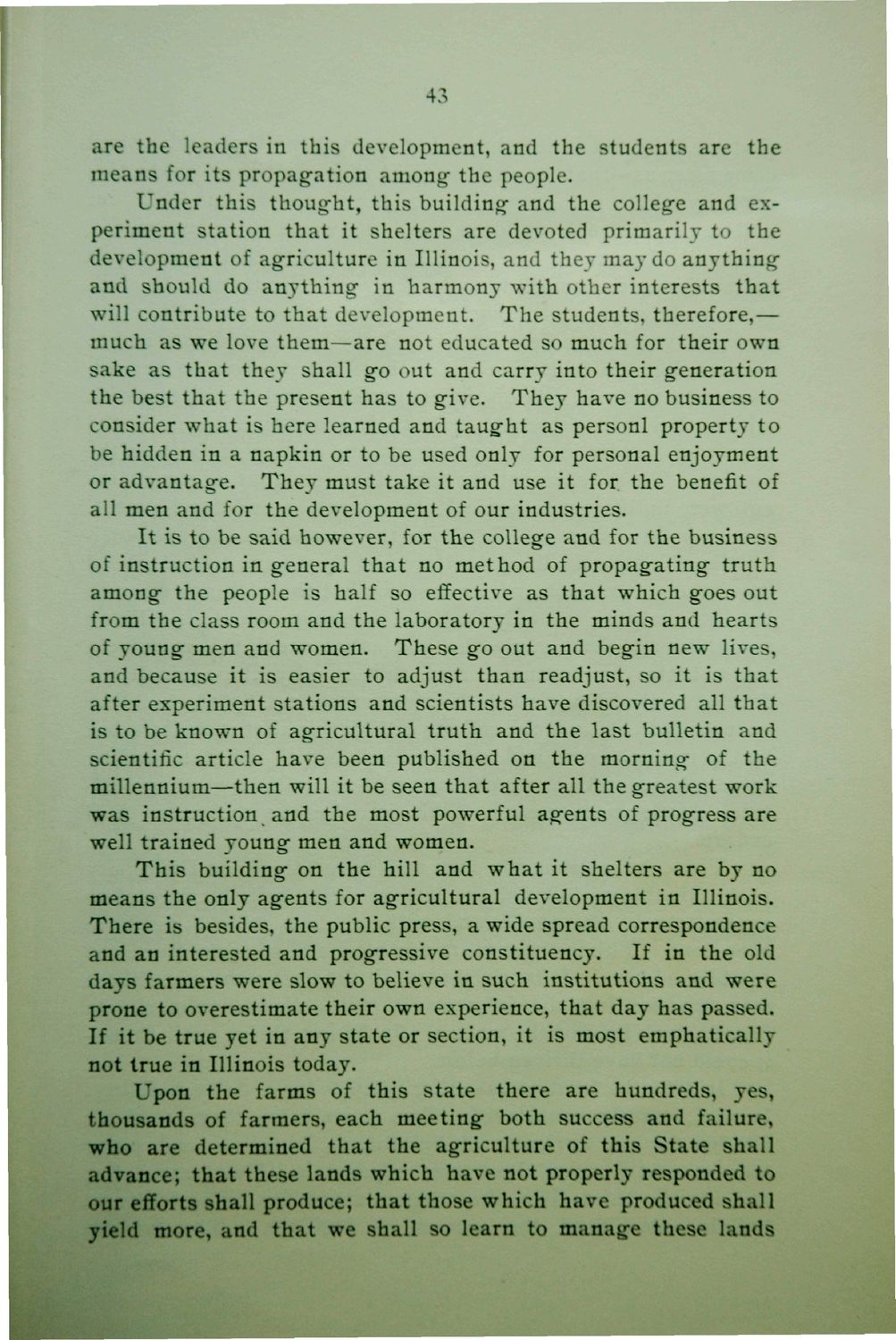| |
| |
Caption: Dedication - Ag Building
This is a reduced-resolution page image for fast online browsing.

EXTRACTED TEXT FROM PAGE:
43 are the leaders in this development, and the students are the means for its propagation among- the people. Under this thought, this building and the college and experiment station that it shelters are devoted primarily to the development of agriculture in Illinois, and they may do anything and should do anything in harmony with other interests t h a t will contribute to that development. T h e students, therefore,— much as we love them—are not educated so much for their own sake as that they shall go out and carry into their generation the best that the present has to give. They have no business to consider what is here learned and taught as personl property t o be hidden in a napkin or to be used only for personal enjoyment or advantage. T h e y must take it and use it for the benefit of all men and for the development of our industries. I t is to be said however, for the college and for the business of instruction in general that no method of propagating truth among the people is half so effective as that which goes out from the class room and the laboratory in the minds and hearts of young men and women. These go out and begin new lives, and because it is easier to adjust than readjust, so it is that after experiment stations and scientists have discovered all t h a t is to be known of agricultural truth and the last bulletin and scientific article have been published on the morning of the millennium—then will it be seen that after all the greatest work was instruction and the most powerful agents of progress are well trained young" men and women. T h i s building: on the hill and w h a t it shelters are by no means the only agents for agricultural development in Illinois. There is besides, the public press, a wide spread correspondence and an interested and progressive constituency. If in the old days farmers were slow to believe in such institutions and were prone to overestimate their own experience, that day has passed. If it be true yet in any state or section, it is most emphatically not true in Illinois today. Upon the farms of this state there are hundreds, yes, thousands of farmers, each meeting both success and failure, who are determined that the agriculture of this State shall advance; t h a t these lands which have not properly responded to our efforts shall produce; that those which have produced shall yield more, and that we shall so learn to manage these lands
| |